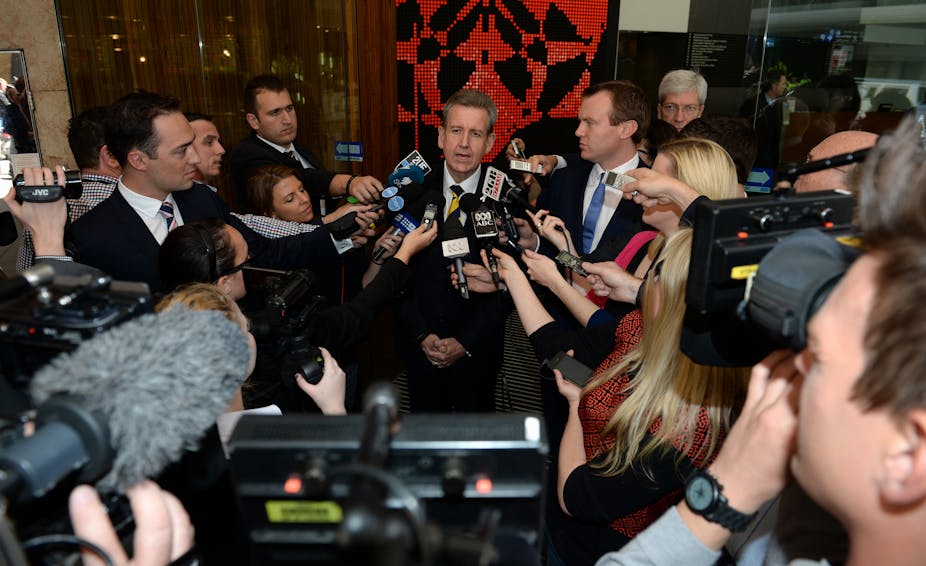The High Court ruling against the Independent Commission Against Corruption’s attempt to investigate a senior lawyer raises interesting questions about the powers and activities of anti-corruption agencies.
The decision on Wednesday focused on the definition of corruption within New South Wales’ ICAC statute and meant ICAC could not investigate the Crown prosecutor, Margaret Cunneen, whose alleged conduct may have perverted the course of justice.
Some may see the High Court ruling that ICAC exceeded its powers as evidence for claims that the anti-corruption agency is out of control.
But our research, a soon-to-be published review of integrity bodies around Australia, suggests otherwise: less than 1% of thousands of complaints to anti-corruption agencies in NSW and Western Australia went to formal investigation.
However, maladministration, misconduct and corruption often morph into each other. In practice, there are no clear boundaries. It is important to see the activities for what they are and for the different kinds of harms they might do to the community.
Why corruption demands unflinching action
Corruption is a real and tangible problem. It destroys good government and undermines social and economic goals and aspirations. We have seen some admirable activities by our anti-corruption agencies in solid attempts to keep our politics and administration clean, transparent and built on integrity.
A politician or person in public service gets a salary. That should be the only reward for that public service. There should be no favours for a bit extra, no payments for decisions, no persuasions to do things in certain ways for extra rewards.
It should be fairly clear when officials do wrong things, when they fail to do something they should do, or when they do something permissible but purposely do it in an improper manner. This is the essence of corruption: breaching trust and improperly trading on that entrusted authority.
Among the public, there is a widespread view that corruption is increasing in Australia, and that many in politics are corrupt.
However, there is a great danger to our society if we label as corrupt those activities that involve normal decision-making and operational matters that might not be to the liking of ideological or partisan opponents, or perhaps demonstrate administrative incompetence.
How many complaints do anti-corruption agencies pursue?
In our research project we found that of all the things reported to the NSW ICAC (around 3000 cases), less than 1% went to full investigation. Three-quarters were closed without further action.
Similarly in Western Australia, less than 1% of 6000 cases went to full investigation, but most were referred for external investigation or for agency system-based evaluation.

In the same project we tried to classify the complaints that came to the anti-corruption agencies. We found that overwhelmingly they were not about corruption, but about criminal activities such as misappropriation or assault, drug use in the workplace, poor work behaviour, such as harassment, unprofessional conduct, neglect of duty, or failure to act.
A large proportion of behaviour (in the order of 25% of cases) breached codes of conduct, demonstrated conflict of interest, poor control of information, petty misuse of power, or breach of confidentiality.
A recent case (and I stress that I do not know any more that what I read in the media) involved a chief executive of a major organisation who was referred to an anti-corruption agency. He was alleged to have misused his credit card and some appointments may not have complied with all the processes required.
This person ran a billion-dollar enterprise; he needed to be nimble with strategic decisions and he rubbed his opponents up the wrong way. To use a corruption allegation to sort out these managerial issues seems not to be the right way to go. There are other managerial remedies.
The landscape of public-service delivery often does not distinguish among corruption, misconduct and maladministration. Where there is fraud and embezzlement, there is a clear criminal case to be made. Where there is laziness, poor service, or even bullying and harassment, management - not an anti-corruption agency - must deal with that.
The case on which the High Court ruled would seem, on the face of things, to involve allegations that would be a matter for the police.
Transparency is vital in a murky area
So somewhere in this murky field there is real corruption: tangible and egregious examples of manipulation for private benefit, of bribery, extortion, nepotism, conflict of interest, misuse of information, cronyism. We have seen these behaviours through the work of our anti-corruption agencies, and have seen exposure, criminal prosecution and recommendations for better practice.
It is important to distinguish doing one’s job from manipulating the system. When an official is bought a cup of coffee or a modest lunch, that in itself is not corruption. It is corruption, however, when that exchange leads to a change of a decision or an outcome that is bought.
Guarding against allegations of corruption requires a high level of transparency. There should be no secrecy about things that might be perceived by others as benefits, but perceived by the official as the nuts and bolts of doing one’s job.
The High Court did not canvass these matters, but these are the sorts of issues that make up the nuts and bolts of corruption mitigation.

